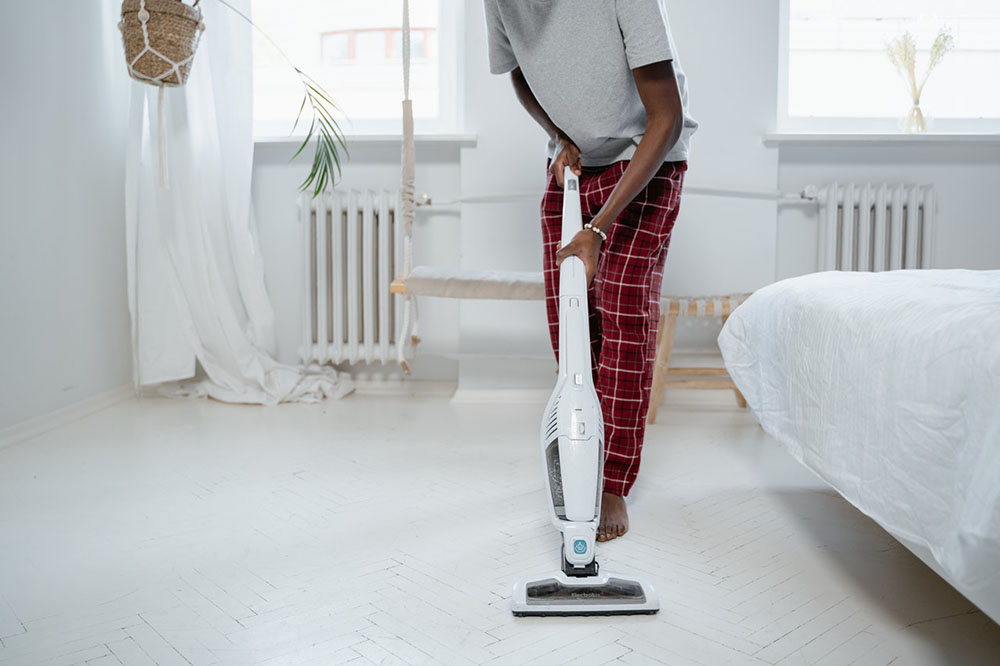Who Invented the Vacuum Cleaner & When? History Explained
-
Codee Chessher
- Last updated:

The vacuum cleaner is an integral part of any home, on perpetual standby to clean up cat litter, dust, and all manner of messes. Vacuum cleaners operate by creating a partial, open-ended vacuum that’s attached to hoses to suck up debris and contain it. Cleaners today are equipped with wet-dry options and numerous types of canister/disposal systems, but how did the vacuum originate? Who invented it, and how has it evolved over the years?
The first vacuum cleaner was invented by Hubert Cecil Booth in 1901. Booth was known for creating suspension bridges and Ferris wheels, but the engineer turned his hand to carpet cleaning after he saw a precursor to the vacuum—a machine that blew air to get dust and dirt off carpets.
As you can expect, this was incredibly inefficient, and Booth put his skills into making a machine that sucks instead of blowing. Let’s see how the vacuum evolved from there.
The 1900s
Booth didn’t have a smooth road to the first vacuum cleaner. He struggled during tests, including one fateful test where he almost choked to death. However, he persisted and formed the British Vacuum Company and set his mind to figuring out how to spread the word about his machine.

The First Vacuum
Famously, Booth took his beast of a machine and literally wheeled it around affluent London neighborhoods to show it off. Most notably, the machine was a fire engine red and came on a gold horse-drawn contraption that came complete with liveried operators. This first machine was used by putting a hose through a window in the home, and then the engine would be started.
The craftiest bit was the glass chamber that allowed people outside to see how much dirt and dust the vacuum sucked out of the home. A single cleaning cost about the equivalent of a maid’s annual salary, so it wasn’t cost-effective by any measure. Even wealthy households could only afford one cleaning per year.
Unfortunately, Booth was met with a flurry of noise complaints and court summons, where he had to prove the merits of his machine. He was successful in convincing the court that he had the only viable vacuum cleaner in the country (indeed, the world), and his business grew to service Buckingham Palace, the Royal Mint, and the Crystal Palace.
Changes to the Vacuum
Booth sold vacuum cleaners to Russia’s tsar and Germany’s kaiser, and other department stores throughout Europe. However, Booth’s vacuum was fairly straightforward, and companies like Hoover and Electrolux had smaller competing models by 1915.
A novel competitor was Walter Griffith’s vacuum, which was really just a portable set of bellows used to suck up dust. Still, it was portable, and that was a big advantage in the emerging vacuum market.
Another very popular early vacuum was invented by James B. Kirby in 1906, which was dubbed the Domestic Cyclone. The Domestic Cyclone used water to separate dirt and dust instead of a cloth filter

A Popular Name in Vacuums: Hoover
A history of vacuums wouldn’t be complete without mentioning Hoover. An asthmatic American janitor named James Spangler conceived a broomstick-like vacuum machine, which is eerily similar to a modern vacuum. Unfortunately, he didn’t have the money to pursue production, and he sold the invention to William Hoover in 1908. If Spangler had the money, his name might have replaced Hoover as a household name.
Early Hoovers had rotating brushes, a cloth filter, a dust disposal bag, and even optional attachments. Upright vacuums were available as early as 1926, but they were still very expensive, and most people couldn’t afford them—especially with the Depression looming. The technology and raw resources weren’t quite there, and the WWII war effort made resources for domestic inventions scarce.
After the war, domestic inventions like the vacuum boomed as resources became more widely available. By many measures, the 1950s were when portable electric vacuum cleaners became affordable for the middle class.
Today
Vacuums largely still use the same technology today, but advances in technology have yielded numerous new styles. We still have basic vacuums with cloth filters that are similar to early portable models, but there are also models that can separate wet and dry messes, vacuums that use cyclonic separation (like Dyson), industrial-style shop vacuums, and handheld vacuums for small and tabletop messes.
In Conclusion
Early vacuum cleaners were big beasts of burden literally transported by horse carriages, but they evolved into portable broomstick-like models within just a few decades. After WWII, most of the middle class were able to afford vacuums at home, and today, we have more options than ever before. Vacuum technology is unlikely to evolve any further, but there is always the possibility of surprises to come.
Featured Image Credit: MART PRODUCTION, Pexels
Contents
